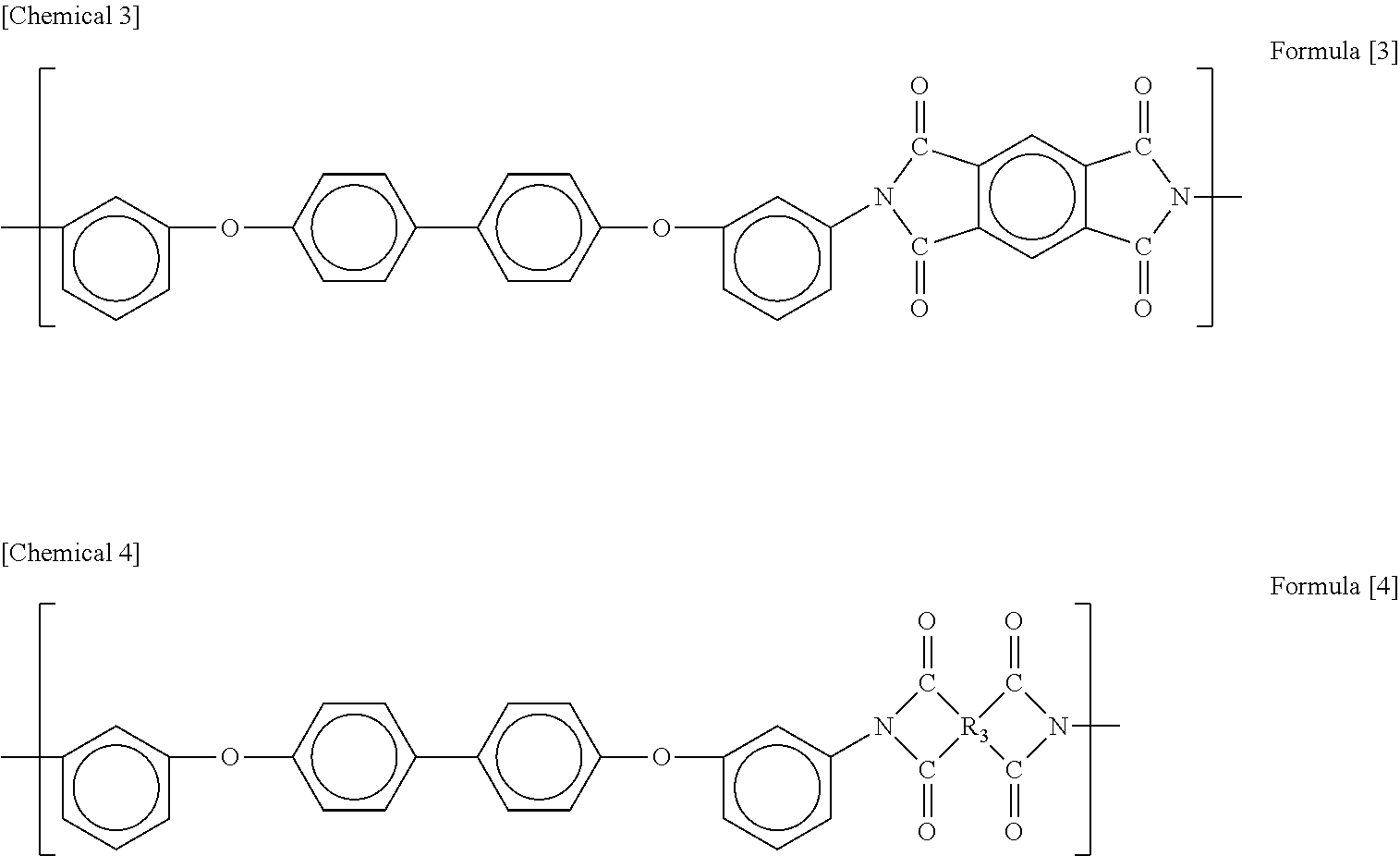Fiber-reinforced prepreg and composite material obtained therefrom
- Summary
- Abstract
- Description
- Claims
- Application Information
AI Technical Summary
Benefits of technology
Problems solved by technology
Method used
Image
Examples
example
[0038]Hereinafter, the present invention will be described in more detail by way of example. The part means the weight part.
examples 1 to 4
[0039]57 Parts of 4,4′-bismaleimide diphenylmethane (Matrimid 5292A: made by Huntsman Corp.), 43 parts of O,O′-diallyl bisphenol A (Matrimid 5292B: made by the Huntsman Corp.) and 2 to 5 parts of a polyetherimide (Ultem 1000: made by GE Corp.) were blended at 130° C. for 60 min to dissolve them and prepare resin component (1). This resin component (1) was kneaded with 20 to 30 parts of an amorphous polyimide particulates having an average particle diameter of 10 micrometers (AURUM PD450M: made by Mitsui Chemicals, Inc.) to thereby uniformly disperse polyimide particulates and prepare resin component (2).
[0040]This resin component (2) was impregnated into a reinforced fiber in which strands of 410 tex (g / 1000 m) of a high-strength and intermediate elastic carbon fiber (made by Toho Tenax Co., Ltd.: IM-600-12K) are aligned using prepreg-making device to produce a unidirectional prepreg. The mass per unit area of the carbon fiber of the prepreg was 145 g / m2 and the resin content was 35...
PUM
| Property | Measurement | Unit |
|---|---|---|
| Temperature | aaaaa | aaaaa |
| Percent by mass | aaaaa | aaaaa |
| Percent by mass | aaaaa | aaaaa |
Abstract
Description
Claims
Application Information
 Login to View More
Login to View More - R&D
- Intellectual Property
- Life Sciences
- Materials
- Tech Scout
- Unparalleled Data Quality
- Higher Quality Content
- 60% Fewer Hallucinations
Browse by: Latest US Patents, China's latest patents, Technical Efficacy Thesaurus, Application Domain, Technology Topic, Popular Technical Reports.
© 2025 PatSnap. All rights reserved.Legal|Privacy policy|Modern Slavery Act Transparency Statement|Sitemap|About US| Contact US: help@patsnap.com



